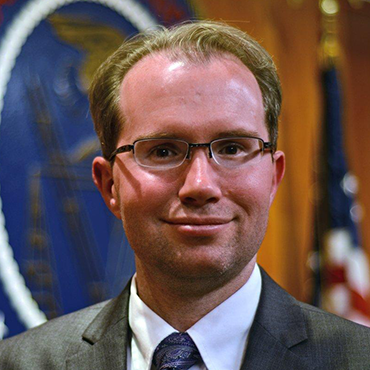The FCC's one-man tweet storm

FCC CIO David Bray uses Twitter to tell the agency’s story and to be available to stakeholders.

Federal Communications Commission CIO David Bray
The CIO shop at the Federal Communications Commission isn't an especially high-profile government job. But this June, when HBO's John Oliver asked viewers to add their comments to the FCC's open Internet proceeding and the system groaned under the resulting traffic, FCC CIO David Bray took on the public role of explaining via Twitter the agency's aging systems to an audience unused to the arcane ways of federal technology.
Bray unveiled @fcc_cio not long after taking the job in August 2013. Launching an official account "took some negotiation," Bray told FCW. His argument was that since "communications is our middle name," it would be useful to have a Twitter account for the CIO, especially considering the changes in store for the agency's more than 200 separate IT systems. "I wanted to have [the account] be a way of explaining the challenges we were going to have in terms of modernizing the FCC's legacy system," Bray said.
The account came in handy as open Internet activists, responding to online rumors that the FCC was deleting comments from the site, flooded the Electronic Comments Filing System with activity. The 1996 ECFS system, a web-based system used by telecommunications lawyers and others to file comments on proposed agency rulemaking, isn't the most responsive site. Before the open Internet proceeding, the most activity ECFS had seen was when form letters came pouring in from viewers scandalized by Janet Jackson's infamous Super Bowl "wardrobe malfunction" in 2004. The open Internet proceeding attracted 3.7 million comments between May and September.
As the comments rolled in, the system began to stall. Bray observed that often a filer would submit a comment and immediately search for that same comment. This was unusual behavior, and it seems likely that some of this activity was due to automated bot programming. The ECFS is a form-based system and is susceptible to that kind of manipulation. "If search was tied up, it would slow down filing," Bray said.
At different points in the comment period, Bray and his team deployed fixes to make the system run more smoothly. He also found himself explaining, sometimes to a dumbstruck public, why the agency charged with regulating so much technology was itself captive to outdated systems. The FCC runs 207 IT systems, half of which are at least 10 years old. Bray hopes to consolidate the data in a single platform, under a single data dictionary, and shift to a single system that supports 207 business processes, although that is a ways off. He also hopes eventually to deploy what he calls a "minimal viable product" to handle the public commenting and search functions of ECFS.”
"Part of being on Twitter is just to be available," Bray said. "If there's something that we can fix, we will fix it."
NEXT STORY: Murtaza Ahmed



